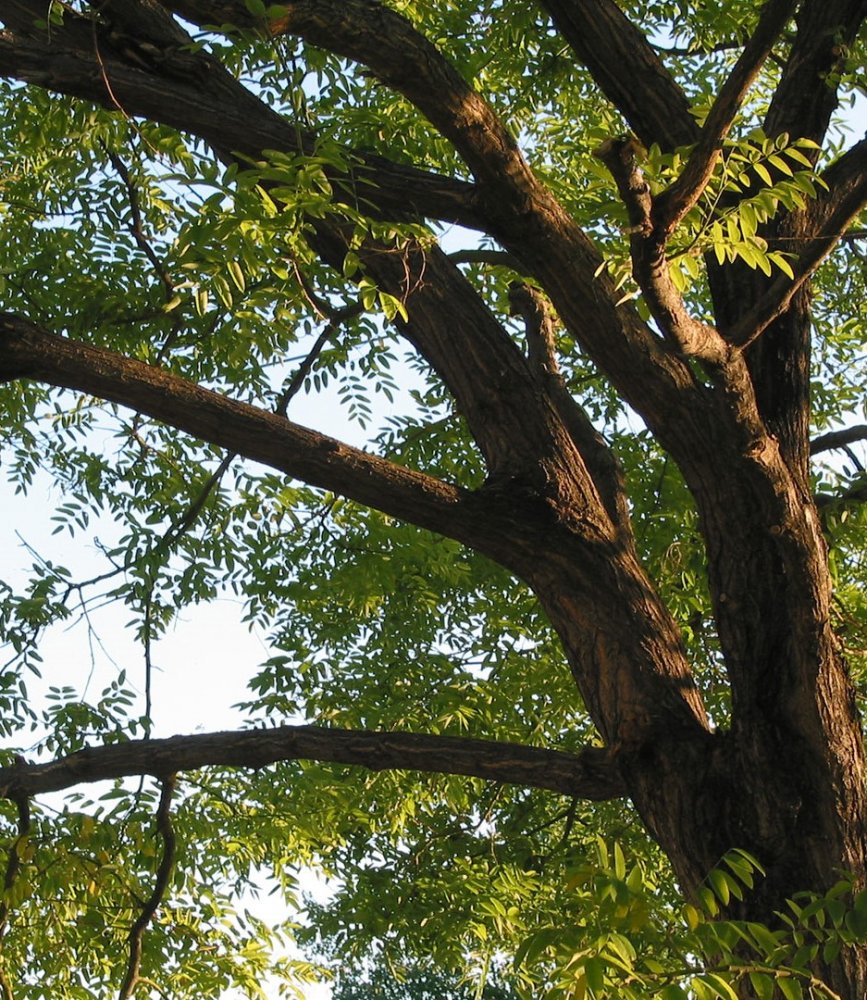Thornless Honey Locust

Did you know?
Thornless Honeylocust trees (Gleditsia triacanthos var. inermis) have significantly less thorns than the fully-thorned species-type, but they are not entirely thornless. If you clip off a small, thorny branch cutting from one these trees and plant it, it will grow to be a fully-thorned honeylocust tree. If you clip off a small, thornless branch cutting from a fully-thorned honeylocust tree and plant it, it will grow to be a thornless honeylocust tree. Additionally, the seeds from a thornless branch will grow into mature thornless trees, while seeds from a thorny branch will grow into mature thorny trees.
Size
Up to 70 feet tall and wide
Flowers, Fruit, Foliage
Inconspicuous yellow flowers grow in clusters and are very fragrant. The fruit are twisted brown seed pods filled with sweet, gummy sap that can reach lengths of up to 18 inches long. Leaves are pinnately or bipinnately compound with up to 30 oval leaflets.
Pests & Diseases
Cankers, leaf spot, witches broom, powdery mildew, rust, borers, midge pod gall, webworm, spider mites, root rot
Landscape Use
Great as a specimen or shade tree
Care Practices
Plant in moist, well-drained soil in an area with full sun. These cold hardy trees can tolerate a variety of soil types, salinity, alkalinity, drought, and temporary standing water.
Native Range
Southern Ontario to northern Florida, west to Texas





